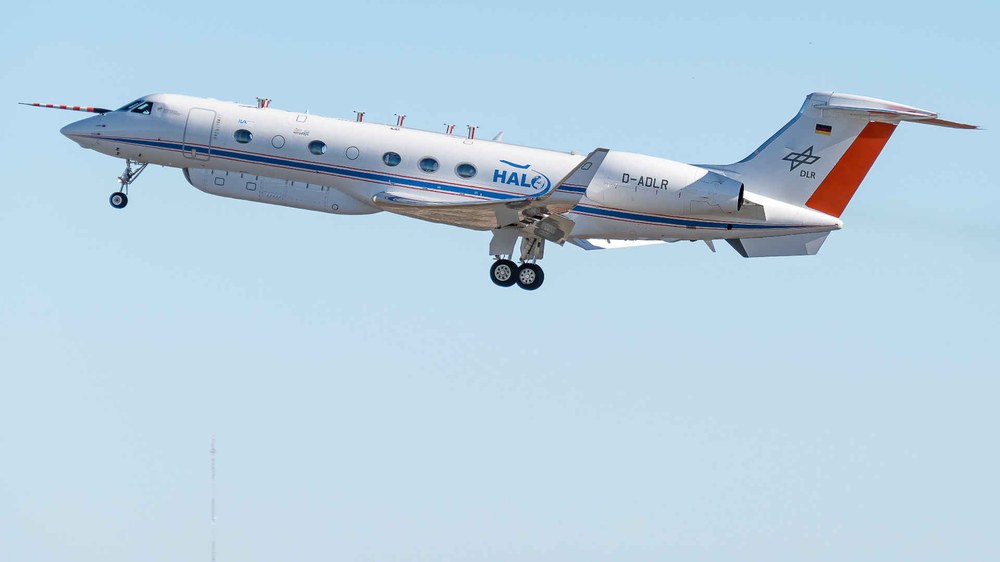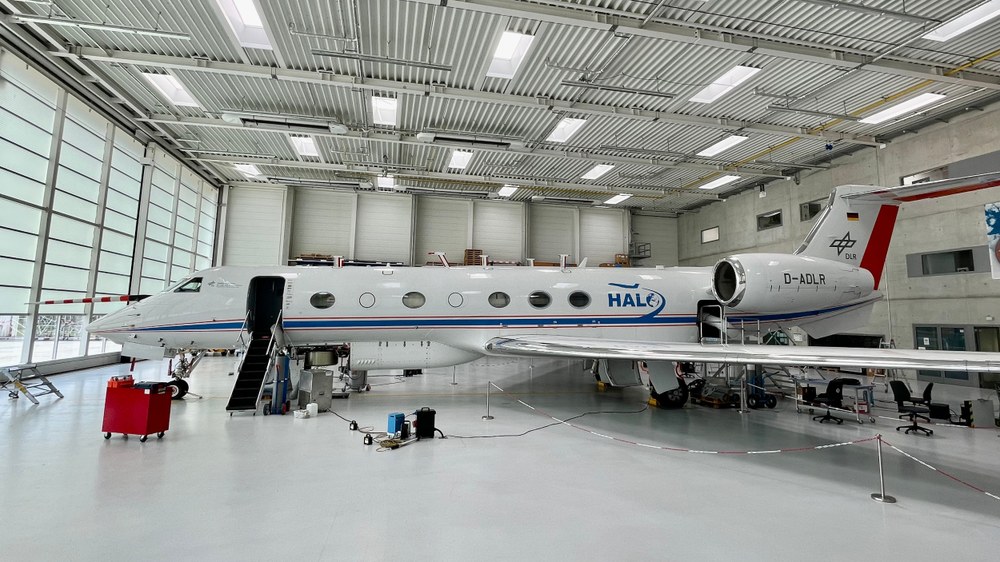HALO investigates transport of polluted air masses over the Pacific Ocean


- The PHILEAS research campaign is investigating how heavily polluted air masses from Southeast Asia spread into the lower stratosphere over Europe.
- The DLR-operated HALO research aircraft is carrying approximately three tonnes of scientific instruments for this campaign.
- The DLR Institute of Atmospheric Physics, which is participating in PHILEAS with two instruments, is contributing essential trace gas measurements.
- Focus: Earth remote sensing, atmospheric physics, climate change
Extreme rainfall during the Asian monsoon repeatedly causes catastrophic destruction in Southeast Asia. However, the effects of this large-scale weather system extend far beyond the Indian subcontinent. Heavily polluted air masses from the near-surface atmosphere in Southeast Asia travel as far as the lower stratosphere above Europe. From August to October 2023, a team of German research institutions will investigate this long-range movement as part of the Probing High-Latitude Export of Air from the Asian Summer Monsoon (PHILEAS) field campaign. Numerous measurement flights with the HALO research aircraft are planned under the direction of Forschungszentrum Jülich and the Johannes Gutenberg University Mainz, with the participation of the German Aerospace Center (Deutsches Zentrum für Luft- und Raumfahrt; DLR).
The initial flights are planned for two weeks from 4 August 2023 with HALO operating from the DLR site in Oberpfaffenhofen. The research aircraft, which can climb up to an altitude of 15 kilometres, will then be deployed from Anchorage in Alaska for around five weeks. More flights from Oberpfaffenhofen will follow. HALO, a modified Gulfstream G550, has a range of over 8000 kilometres.
The research aircraft, which is operated by DLR, will carry approximately three tonnes of scientific instruments for this campaign. These will provide detailed insights into the transport and mixing processes that occur in the upper troposphere and lower stratosphere and how these affect global climate and weather.
The Asian monsoon affects the entire northern hemisphere
During the summer months, the Asian monsoon influences the dispersion of aerosols and greenhouse gases throughout the northern hemisphere. Its large-scale convection processes transport air from the polluted near-surface boundary layer in Southeast Asia to an altitude of approximately 16 kilometres. There, the polluted air gathers in what is referred to as the monsoon anticyclone – a very large high-pressure area in the upper troposphere. At times, this monsoon anticyclone extends from the Arabian Peninsula to the Asian Pacific coast.
During the summer and early autumn, air vortices with polluted air repeatedly separate from this high-pressure area, with increased concentrations of greenhouse gases and aerosols. These vortices then travel northeast across the Pacific and eventually get mixed into the lower stratosphere. In addition to pollution, these processes also transport water vapour into the lower stratosphere, which is climate-relevant – particularly in this high-altitude region.
"In the first phase of PHILEAS, the polluted air in the monsoon anticyclone will be examined during measurement flights from Oberpfaffenhofen towards the Arabian Peninsula," says Martin Riese, Director of the Jülich Instituts für Stratosphäre. "The transport of the polluted air vortices across the Pacific to high latitudes and the mixing into the lower stratosphere will be investigated in a second phase of the campaign, during measurement flights from Anchorage."
In order to be able to assess the large-scale influence of transport and mixing processes on the background atmosphere at high latitudes, PHILEAS will culminate in a measurement phase from Oberpfaffenhofen in early October. The influence of the monsoon system on the lower stratosphere over Europe will be determined by comparing these data with those acquired during the earlier campaign phase. There are already clear indications of this from earlier HALO expeditions.
Understanding the cocktail of trace substances
The DLR Institute of Atmospheric Physics, which is participating in PHILEAS with two instruments, is conducting essential trace gas measurements. Nitrogen oxides, the sum of all reactive nitrogen compounds, and atmospheric acids such as nitric acid and hydrochloric acid are important parameters for understanding the cocktail of trace substances in the Asian monsoon. "These trace substances are a major contributor to the ozone chemistry in this sensitive region of the atmosphere and to the formation of aerosol particles," explains Helmut Ziereis of the DLR Institute of Atmospheric Physics in Oberpfaffenhofen. "The trace gases are transported from local sources on the ground to the upper troposphere as if they were inside an express elevator." Anthropogenic emissions from transport or industry, and the burning of biomass, for example in forest fires, release nitrogen oxides and other trace substances on the ground. There are also specific sources within the atmosphere itself. In addition to air transport, these include, above all, gases produced by lightning.
"In addition to investigating the long-distance transport from the monsoon region, the measurements are also aimed at examining the effects of the devastating forest fires in Canada," says Peter Hoor, Head of the Airborne Measurements Group at the Mainz Institute for Atmospheric Physics. "These fires also have an impact on the stratosphere. They can trigger intense convection and introduce aerosols and pollution into the atmosphere, even at altitudes of 12 kilometres or more. PHILEAS gives us the opportunity to investigate the influence of such smoke plumes on the composition of this high-altitude region and the developing situation."
The partners
In addition to Forschungszentrum Jülich and the University of Mainz, the PHILEAS project also involves the Karlsruhe Institute of Technology (KIT), the German Aerospace Center (DLR), the Leibniz Institute for Tropospheric Research in Leipzig (TROPOS), the Max Planck Institute for Chemistry in Mainz and the universities of Frankfurt and Wuppertal. The research flights are supported by a team of approximately 70 people.
About HALO
The High Altitude and Long Range (HALO) research aircraft is a joint initiative by German environment and climate research bodies. HALO is funded by contributions from the Federal Ministry of Education and Research (Bundesministerium für Bildung und Forschung; BMBF), the German Research Foundation (Deutsche Forschungsgemeinschaft; DFG), the Helmholtz Association of German Research Centers (Helmholtz-Gemeinschaft Deutscher Forschungszentren), the Max Planck Society (Max-Planck-Gesellschaft; MPG), the Leibniz Association (Leibniz-Gemeinschaft), the Free State of Bavaria (Freistaat Bayern), the Karlsruhe Institute of Technology (KIT), Forschungszentrum Jülich and the German Aerospace Center (Deutsches Zentrum für Luft- und Raumfahrt; DLR). DLR is both the owner and operator of the aircraft.
